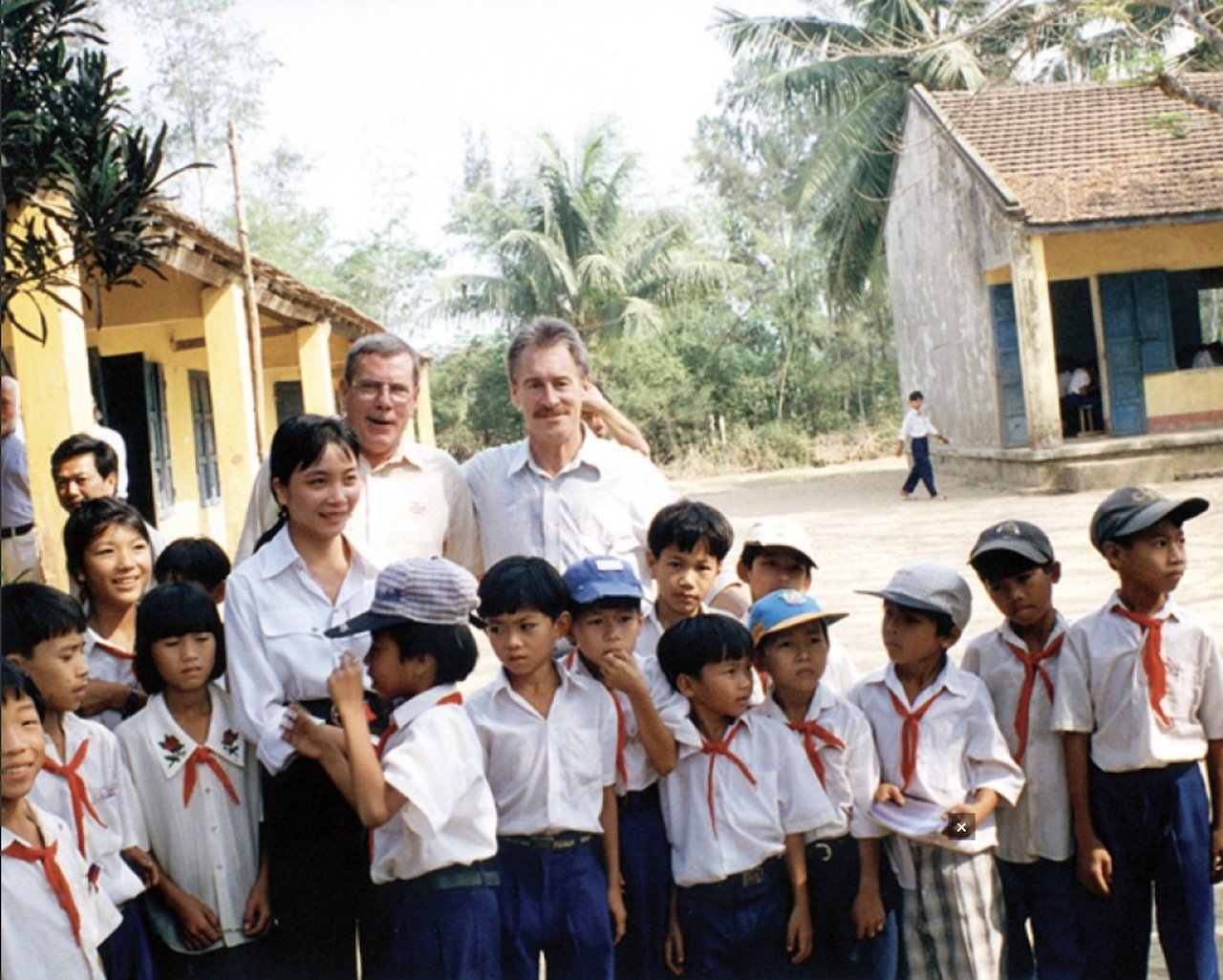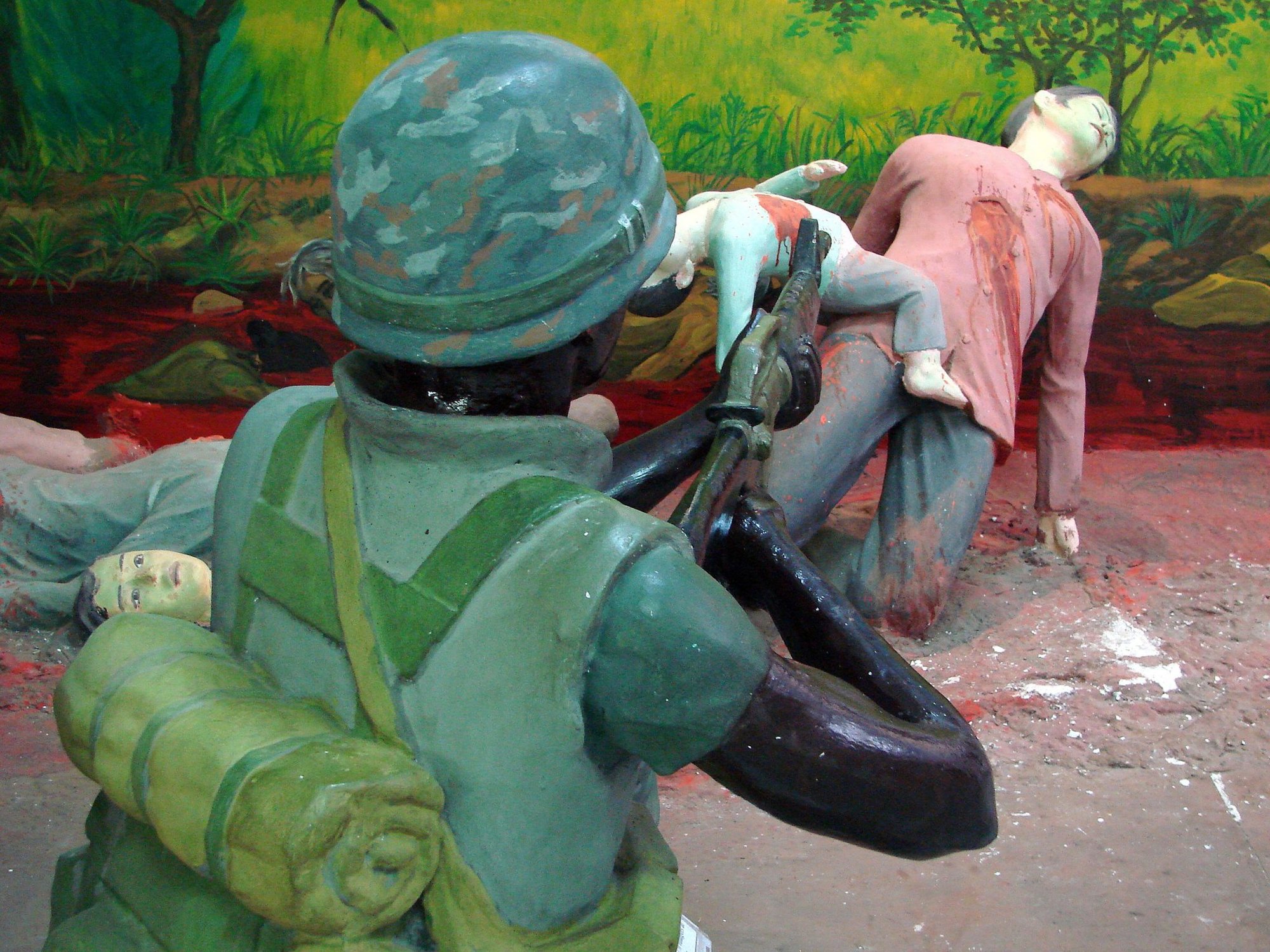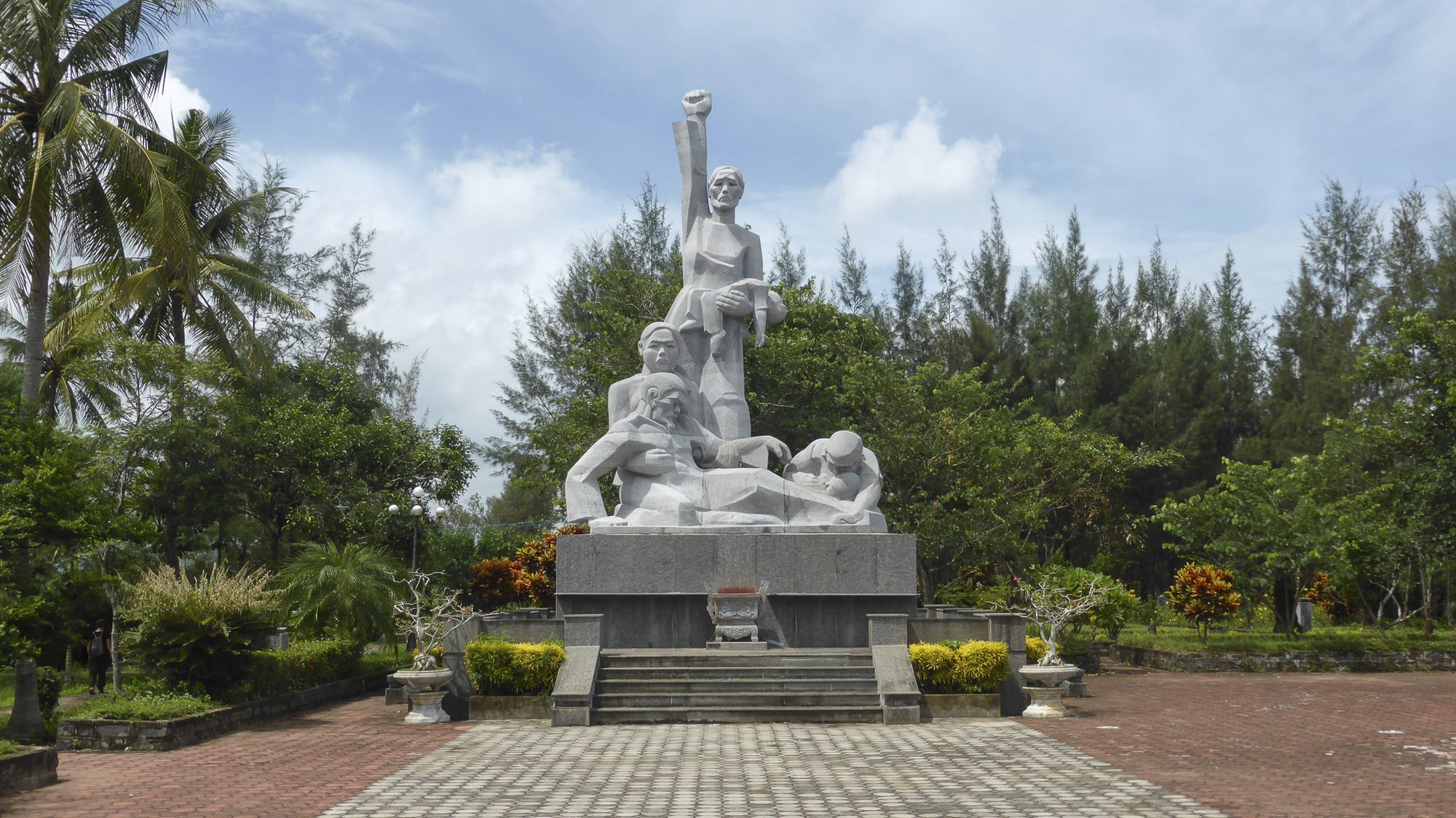
Lawrence Colburn, right, and his helicopter pilot Hugh Thompson at My Lai village, March, 16, 1998. Photo courtesy of Facebook / Stars and Stripes. Link: https://www.stripes.com/larry-colburn-the-last-hero-of-my-lai-1.445593#gallery
Warrant Officer Hugh Thompson Jr., a 24-year-old Army pilot, hovered over the small village of My Lai with his OH-23 Raven helicopter on the morning of March 16, 1968. He and his two-man crew were flying a scout mission to draw fire and pinpoint enemy activity in the Quang Ngai province along the south-central coastal region of Vietnam. As they looked toward the ground, all they could see were older men, elderly women, and children, many of whom were carrying empty containers and baskets on their way to the market.
There was no sign of Viet Cong activity or enemy traffic. Thompson piloted his helicopter to a nearby village to complete his survey and again discovered it was another dry hole. He turned his chopper around to return to the village of My Lai only to discover he had entered a nightmare.
“I just saw these bodies everywhere and no explanation,” Thompson later recalled. “That’s when I started trying to figure out what had happened.” Thompson had clacked his radio to life when he saw a wounded person on the ground calling for help. A US Army captain was a foot away when he raised his rifle and murdered the Vietnamese villager.
Landing his helicopter, Thompson got out of the cockpit and begged a soldier on the ground to help these people out. With a devilish grin the soldier told him, “We’ll help them out of their misery.” Thompson told the soldier to quit joking before he returned to his helicopter to lift off into the air once more.

Thompson and his crew chief, Spc. 4 Glenn Andreotta, watched as the Army soldiers from Company C of the 1st Battalion, 20th Infantry Regiment, 11th Brigade of the 23rd (Americal) Infantry Division, indiscriminately fired their weapons at anyone who moved.
“And I finally thought of the Nazis […] marching everybody down to a ditch and blowing them away,” Thompson said of the moment before he decided to stop the violence. The soldiers on a killing spree moved from one target to the next — murdering infants, children, men, women, and elderly.
Thompson touched his helicopter down between the bloodthirsty American soldiers and a bunker filled with defenseless women and children. He ordered Andreotta and door gunner Spc. 4 Larry Colburn to open fire on these American soldiers if they hurt any more innocent civilians. Thompson again left his helicopter and questioned a higher-ranking officer on the ground about how he was going to get the civilians out of the bunker. The officer replied he intended to use a hand grenade.
Realizing that asking wasn’t going to prevent the senseless killings, Thompson and his helicopter crew held the soldiers at gunpoint while supporting gunships orbiting overhead closed in. He and his crew, with the assistance of the gunships, successfully stopped the violence and airlifted more than a dozen frightened Vietnamese villagers to safety.
As they were in the air, Andreotta saw movement in a ditch that had more than 100 bodies in it. Thompson swung his helicopter around, and Andreotta went into the killing field. “He found this one kid and brought the kid back up and handed it to Larry, and we laid it across Larry and my lap and took him out of there,” Thompson recalled when describing Andreotta’s actions. “I remember thinking Glenn Andreotta put himself where nobody in their right mind would want to be, and he was driven by something. I haven’t got the aircraft on the ground real stable. He bolted out of that aircraft into this ditch. Now he was a hero.”
Three weeks later Andreotta would be killed in action in Vietnam. When Thompson and Colburn returned home, they were initially labeled as traitors, and Thompson received death threats.
“The soldier is trained to kill, but a soldier is not trained to murder,” Thompson reflected. “You have to do the right thing in life, but don’t look for any rewards.”
The atrocities of the My Lai Massacre — which resulted in the slaughter of at least 504 innocent civilians — was not made public for over a year.
When the soldiers from the company involved first arrived in Vietnam in December 1967, they suffered numerous casualties to an enemy they couldn’t see. The Viet Cong’s guerrilla warfare tactics, using land mines and booby traps, had decimated US morale. Thompson later suggested the motives for the killings were a combination of revenge, poor leadership, and peer pressure shielded by the rationale of soldiers just following orders. These orders were to complete a search-and-destroy operation based on intelligence reports, to target and eliminate Viet Cong soldiers and Viet Cong sympathizers.

The courts prosecuted 14 soldiers in total, and 13 were acquitted. The trial of Lt. William Calley Jr., the lone perpetrator found guilty, began on Nov. 17, 1970. The cover of Time magazine showed his face, in addition to the question, “Who shares the guilt?”
Calley served just three years on house arrest before he was freed in 1974.
Three decades after the events that first labeled Thompson’s helicopter crew as outcasts and rats by their fellow servicemen, they were awarded the prestigious Soldier’s Medal, a commendation for heroic actions taken on behalf of soldiers or civilians outside of a combat situation. The forgotten heroes of My Lai have all since passed away.
“We were given credit for saving 11 lives that day,” Thompson said in a presentation to the Burnaby School District. “Some scholars say we saved about upwards to 20,000 lives because that operation was supposed to go on for four days, hit a village in the morning, hit a village in the afternoon, and there was up to 20,000 people who lived in all those eight villages. By our actions and complaining, the operation was stopped in four hours.”

Matt Fratus is a history staff writer for Coffee or Die. He prides himself on uncovering the most fascinating tales of history by sharing them through any means of engaging storytelling. He writes for his micro-blog @LateNightHistory on Instagram, where he shares the story behind the image. He is also the host of the Late Night History podcast. When not writing about history, Matt enjoys volunteering for One More Wave and rooting for Boston sports teams.
BRCC and Bad Moon Print Press team up for an exclusive, limited-edition T-shirt design!
BRCC partners with Team Room Design for an exclusive T-shirt release!
Thirty Seconds Out has partnered with BRCC for an exclusive shirt design invoking the God of Winter.
Lucas O'Hara of Grizzly Forge has teamed up with BRCC for a badass, exclusive Shirt Club T-shirt design featuring his most popular knife and tiomahawk.
Coffee or Die sits down with one of the graphic designers behind Black Rifle Coffee's signature look and vibe.
Biden will award the Medal of Honor to a Vietnam War Army helicopter pilot who risked his life to save a reconnaissance team from almost certain death.
Ever wonder how much Jack Mandaville would f*ck sh*t up if he went back in time? The American Revolution didn't even see him coming.
A nearly 200-year-old West Point time capsule that at first appeared to yield little more than dust contains hidden treasure, the US Military Academy said.












